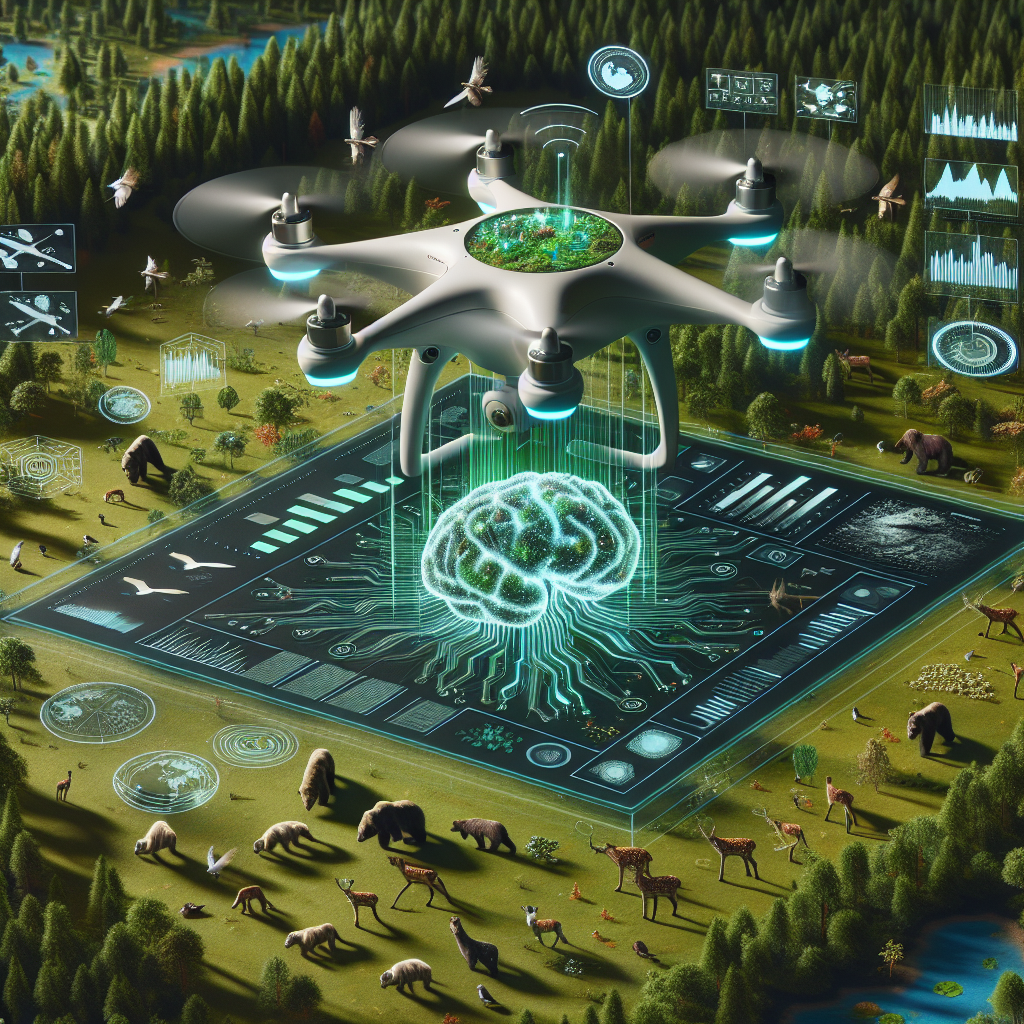Artificial intelligence (AI) is revolutionizing the way we monitor and conserve the environment. With the increasing threats to our planet such as climate change, deforestation, pollution, and loss of biodiversity, it has become more important than ever to use technology to help us better understand and protect our natural resources. AI-powered tools are being used in various environmental monitoring and conservation initiatives to collect, analyze, and interpret vast amounts of data in real-time, providing valuable insights for decision-making and action.
One of the key areas where AI is making a significant impact is in the field of wildlife conservation. AI-powered cameras and drones are being used to monitor and track endangered species, helping conservationists to identify and protect vulnerable populations. These tools can analyze images and video footage to detect the presence of specific species, monitor their behavior, and track their movements over time. This information is crucial for understanding the habitat requirements of endangered species and developing effective conservation strategies to ensure their survival.
In addition to wildlife monitoring, AI is also being used to monitor and manage natural resources such as water, air, and soil. AI algorithms can analyze data from sensors and satellites to track changes in environmental conditions, detect pollution hotspots, and predict environmental risks. This information is essential for policymakers, regulators, and environmental agencies to make informed decisions about resource management and conservation efforts.
One of the key advantages of using AI in environmental monitoring and conservation is its ability to process and analyze large amounts of data quickly and accurately. Traditional methods of data analysis can be time-consuming and labor-intensive, making it difficult to keep up with the rapid pace of environmental change. AI algorithms can analyze complex datasets in real-time, identifying patterns and trends that may not be apparent to human observers. This information can help scientists and policymakers to make more informed decisions about how to protect and preserve our natural resources.
Another advantage of using AI in environmental monitoring and conservation is its ability to automate repetitive tasks, freeing up human resources for more strategic and creative work. For example, AI-powered drones can be programmed to fly over large areas of land, collecting data on vegetation cover, soil quality, and wildlife populations. This data can then be analyzed using AI algorithms to generate detailed maps and reports, providing valuable insights for conservation efforts. By automating these tasks, AI can help environmental organizations to work more efficiently and effectively, leading to better outcomes for the planet.
Despite the many advantages of using AI in environmental monitoring and conservation, there are also some challenges and limitations to consider. One of the main challenges is the potential for bias in AI algorithms, which can lead to inaccurate or misleading results. For example, if the training data used to develop an AI model is not representative of the full range of environmental conditions, the model may struggle to make accurate predictions in new situations. To address this challenge, it is important for environmental scientists and data scientists to work together to ensure that AI algorithms are developed and tested using high-quality, unbiased data.
Another challenge is the potential for AI to replace human workers in environmental monitoring and conservation efforts. While AI can automate many tasks and processes, there is still a need for human expertise and judgment to interpret and act on the information generated by AI algorithms. It is important for environmental organizations to strike a balance between using AI to enhance their capabilities and ensuring that human workers are still involved in decision-making and action.
In conclusion, AI is a powerful tool that is transforming the way we monitor and conserve the environment. By harnessing the power of AI algorithms, we can collect and analyze vast amounts of data in real-time, providing valuable insights for decision-making and action. From wildlife monitoring to resource management, AI is helping us to better understand and protect our natural resources for future generations. By addressing the challenges and limitations of AI, we can leverage its potential to create a more sustainable and resilient planet.
FAQs:
Q: How is AI being used in wildlife conservation?
A: AI is being used in wildlife conservation to monitor and track endangered species, analyze their behavior and movements, and develop effective conservation strategies.
Q: What are the advantages of using AI in environmental monitoring and conservation?
A: The advantages of using AI in environmental monitoring and conservation include its ability to process and analyze large amounts of data quickly and accurately, automate repetitive tasks, and improve efficiency and effectiveness in conservation efforts.
Q: What are the challenges of using AI in environmental monitoring and conservation?
A: Some of the challenges of using AI in environmental monitoring and conservation include the potential for bias in AI algorithms, the risk of replacing human workers with automation, and the need for human expertise and judgment to interpret and act on AI-generated information.

